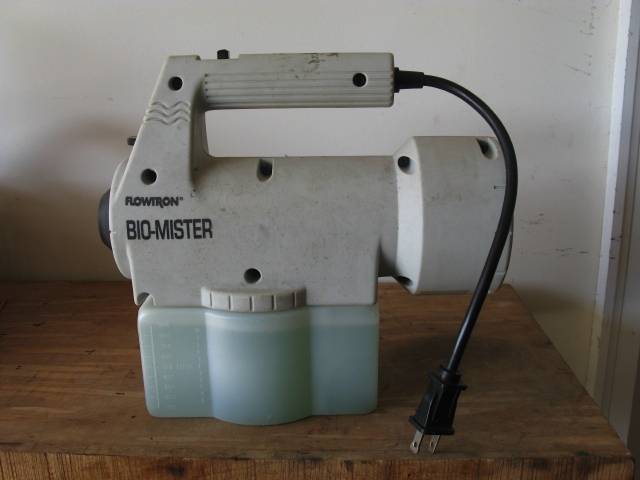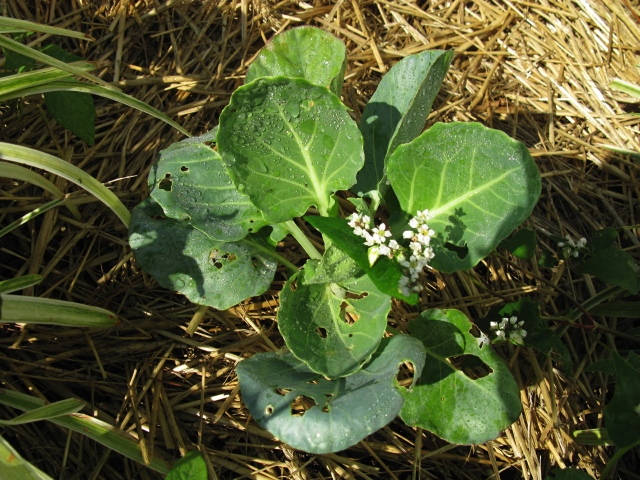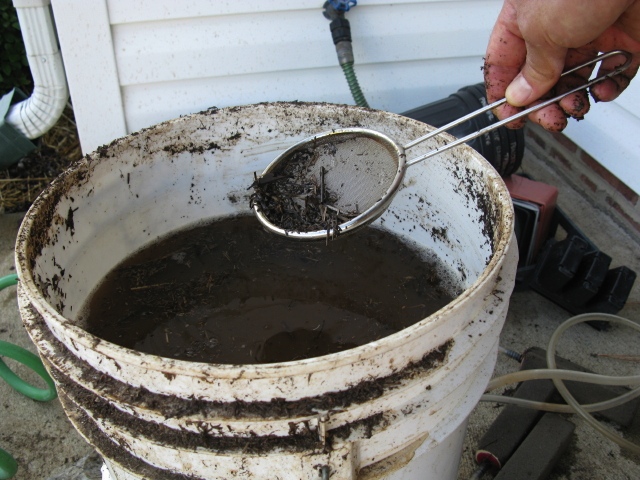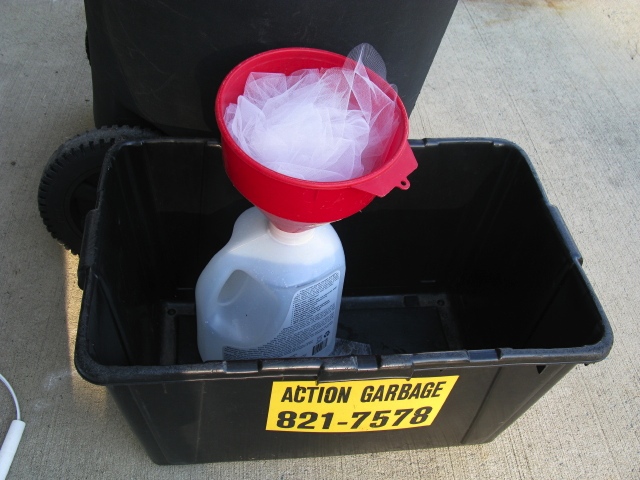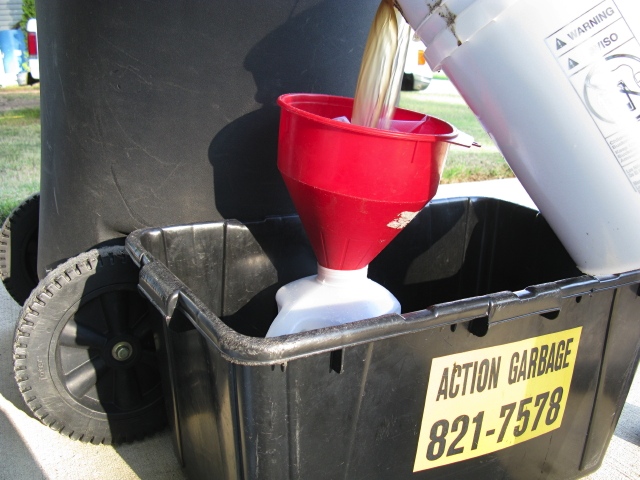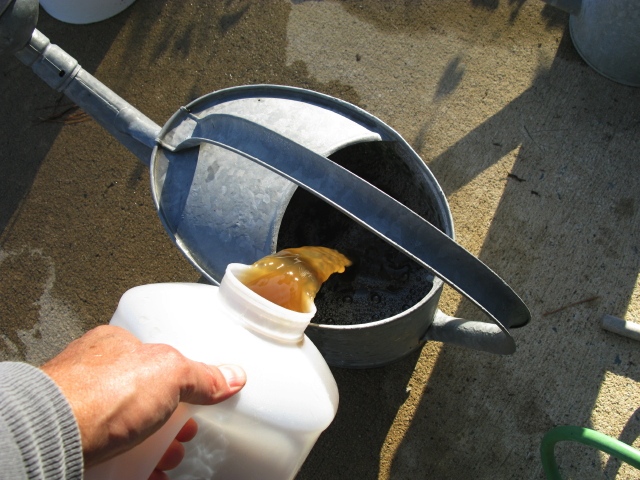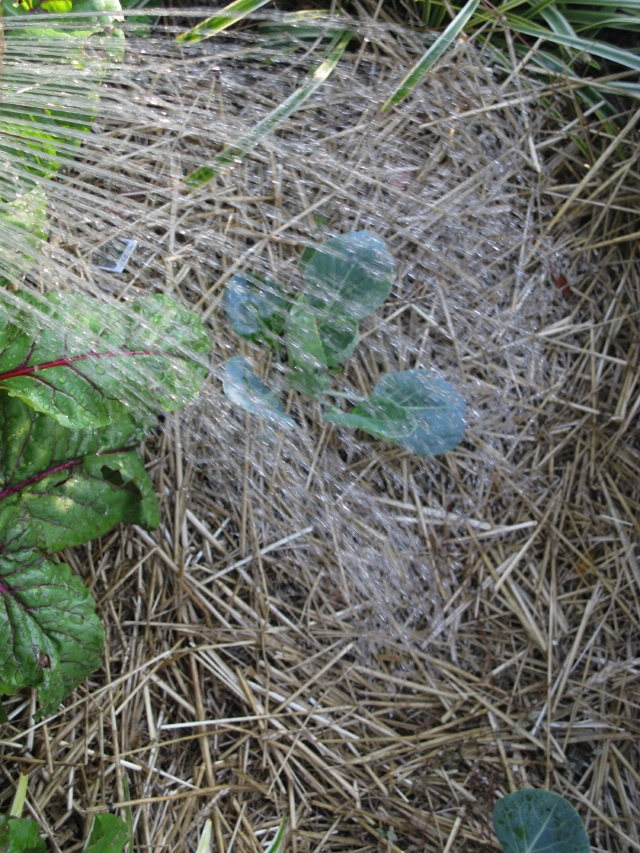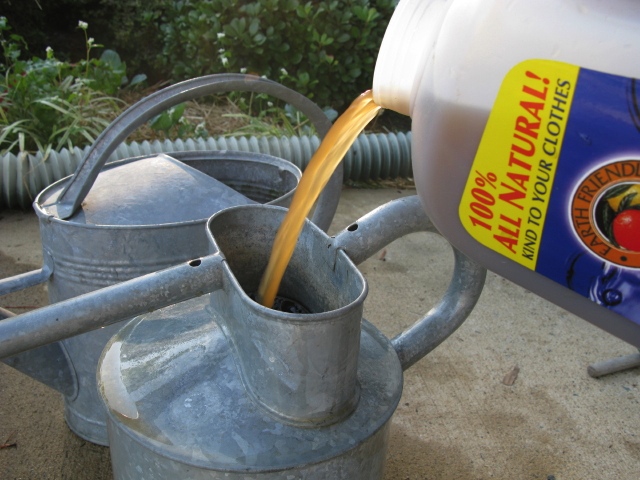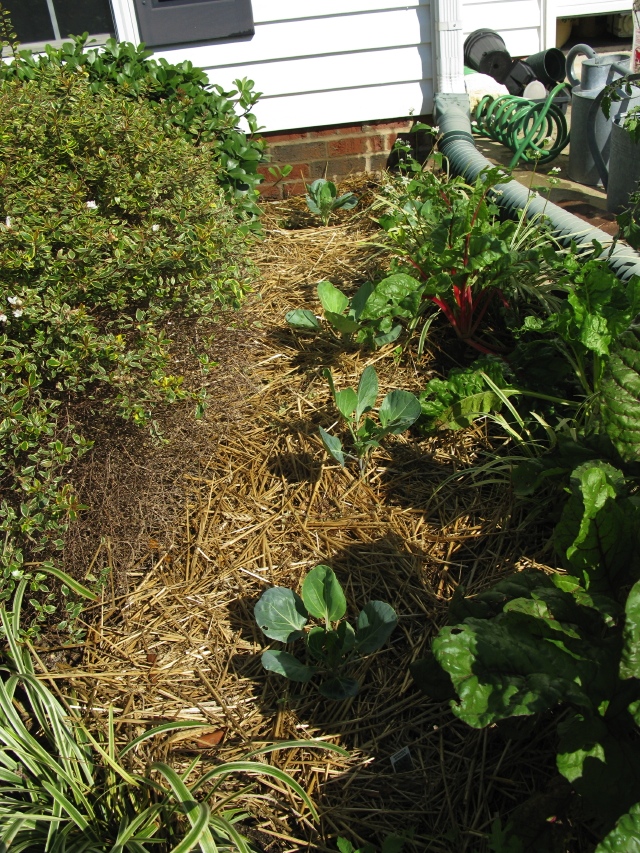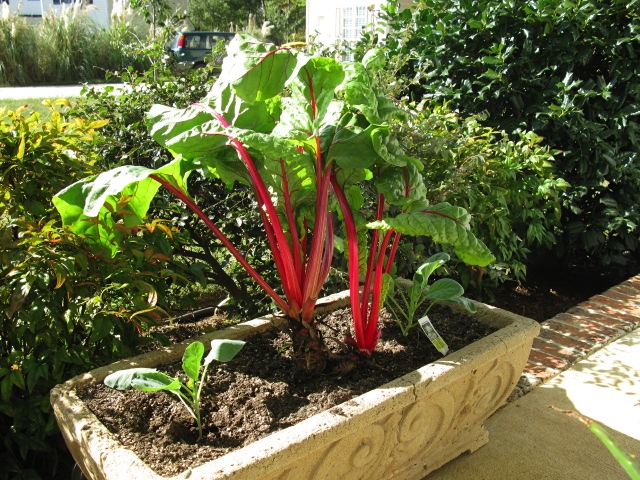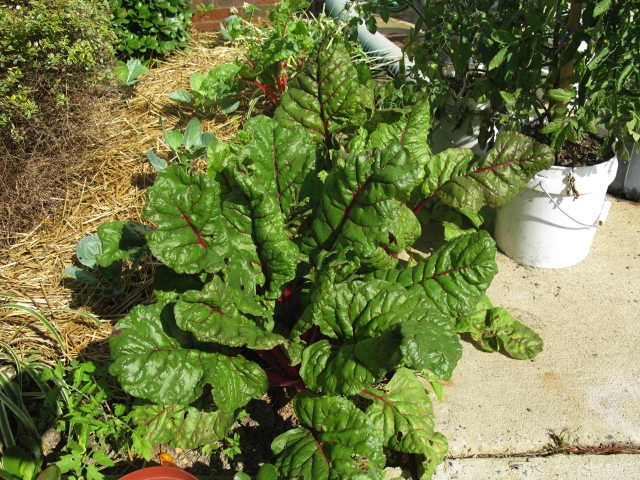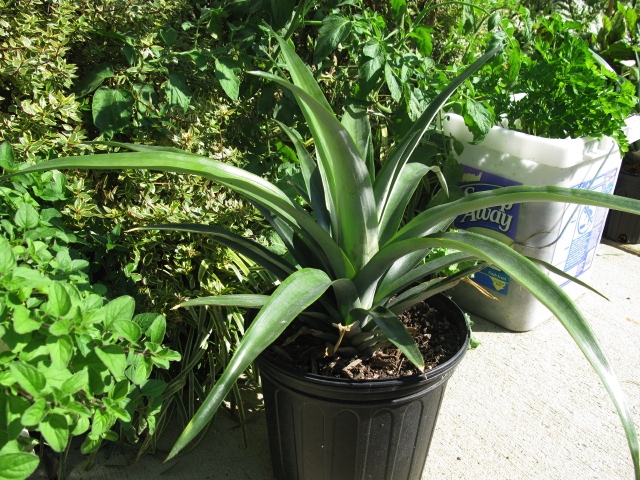It's been a couple years since I made compost tea, but since I created a compost bin a couple months ago and now have some viable compost, I made a batch of tea yesterday. Instead of the 30-gallon brewers (plastic trash cans) I used previously, I used two 5-gallon buckets. Into the water went about a gallon of compost, a few tablespoons of blackstrap molasses (to feed the bacteria), and some ground kelp. (Daniel and I debated the addition of kelp and took the "couldn't hurt" approach and added it in—he to his tea in Columbia and I to mine in Charlotte. Credit where credit is due: Daniel and I both watched a video online of John Evans, a renowned Guinness record holder for giant vegetables in Alaska, who uses compost tea a lot. So it stimulated a resurgence of interest in brewing teas again.)
After brewing for 24 hours, and scooping the largest debris (un-composted bits of organic "stuff") off the surface of the tea, it's ready to be filtered:
I use a large plastic funnel stuffed with tule to act as a filter. Simply pouring the tea into the funnel catches the debris in the tule making the tea clean enough to go in a watering can:
I then poured the tea into a large watering can, diluted with water from the rain barrels:
Compost tea can serve three purposes: One, poured directly over the plants it provides a microbial coating on leaves that provides a defense against airborne disease spores; two, it serves as a foliar feeding source for plants to absorb nutrients through the leaf pours (stomata); and three, as a soil drench, tea adds microbial life and nutrients to the soil to aid in nutrient uptake through the roots. These pictures are of drenching young transplants:
For soil drenching, I used a different watering can, filling it first with rain water from the rain barrels. I love having access to this water from the barrels!
I then added tea to this water making a diluted mix to soak the roots of the cabbage, cauliflower, Brussels sprouts, broccoli, and collards:
A few other pictures:
Daniel and I were agreeing the other day on what troopers the Swiss chard plants are. We both have plants that have been producing since last spring, going through the summer without bolting (going to seed). They are truly prolific staples of the home garden: (I tucked a couple cauliflower plants in around this chard)
My Russian kale plants, after surviving two severe attacks by the cabbage butterfly caterpillars, are re-sprouting for a third try this fall. The standard (organically approved) defense against these and other caterpillars on brassica plants is a bacteria called bacillus thuringiensis. When it is sprayed on the leaves of plants, caterpillars ingest the bacteria and it causes their demise in 1-2 days. The bacteria is harmless to humans or pets. I didn't have any BT on hand earlier this summer to protect the brassicas, but have some for the fall season in case the caterpillars show up again:

Finally, I don't think I've shown pics of my pineapple plants. I was at a grocery store back in the spring and saw a deli guy slicing the tops off some pineapples before chopping the fruit up for sale in the deli. I asked him if I could have the tops—brought them home and planted the two nicest ones. They were about a fourth this size when I planted them. Don't know what the outcome will be, but I'll probably try to keep them indoors through the winter. They have become beautiful plants:
